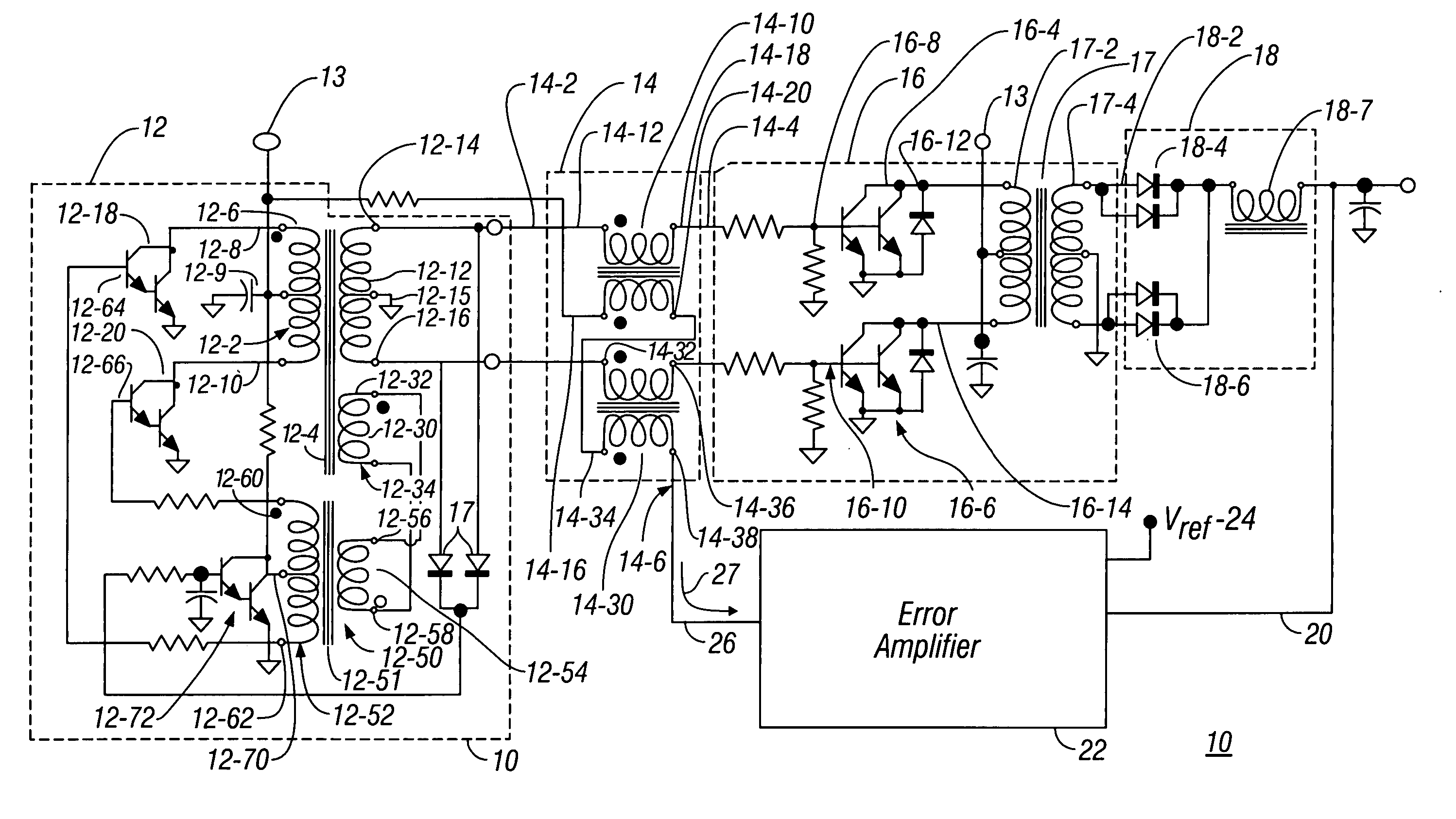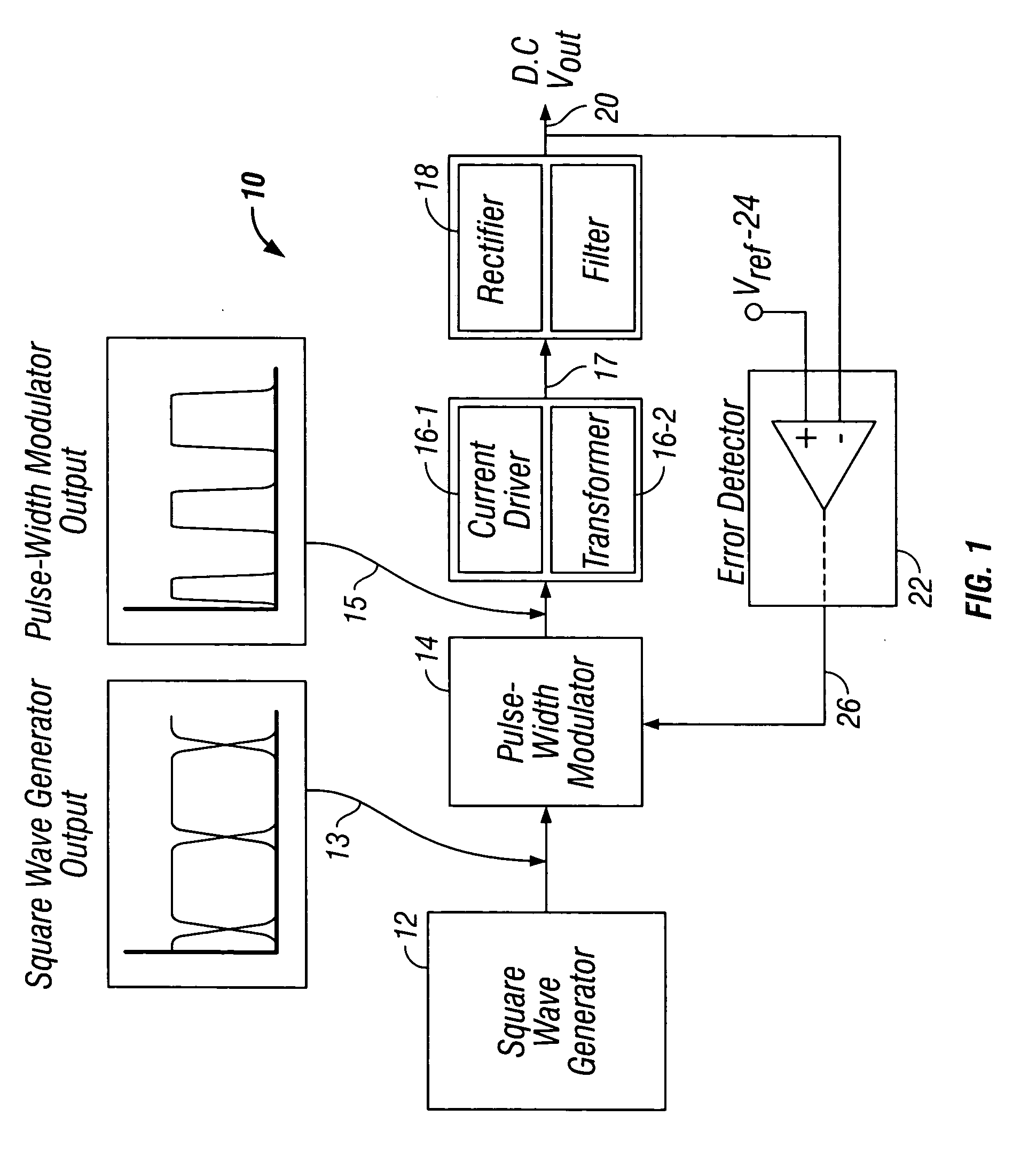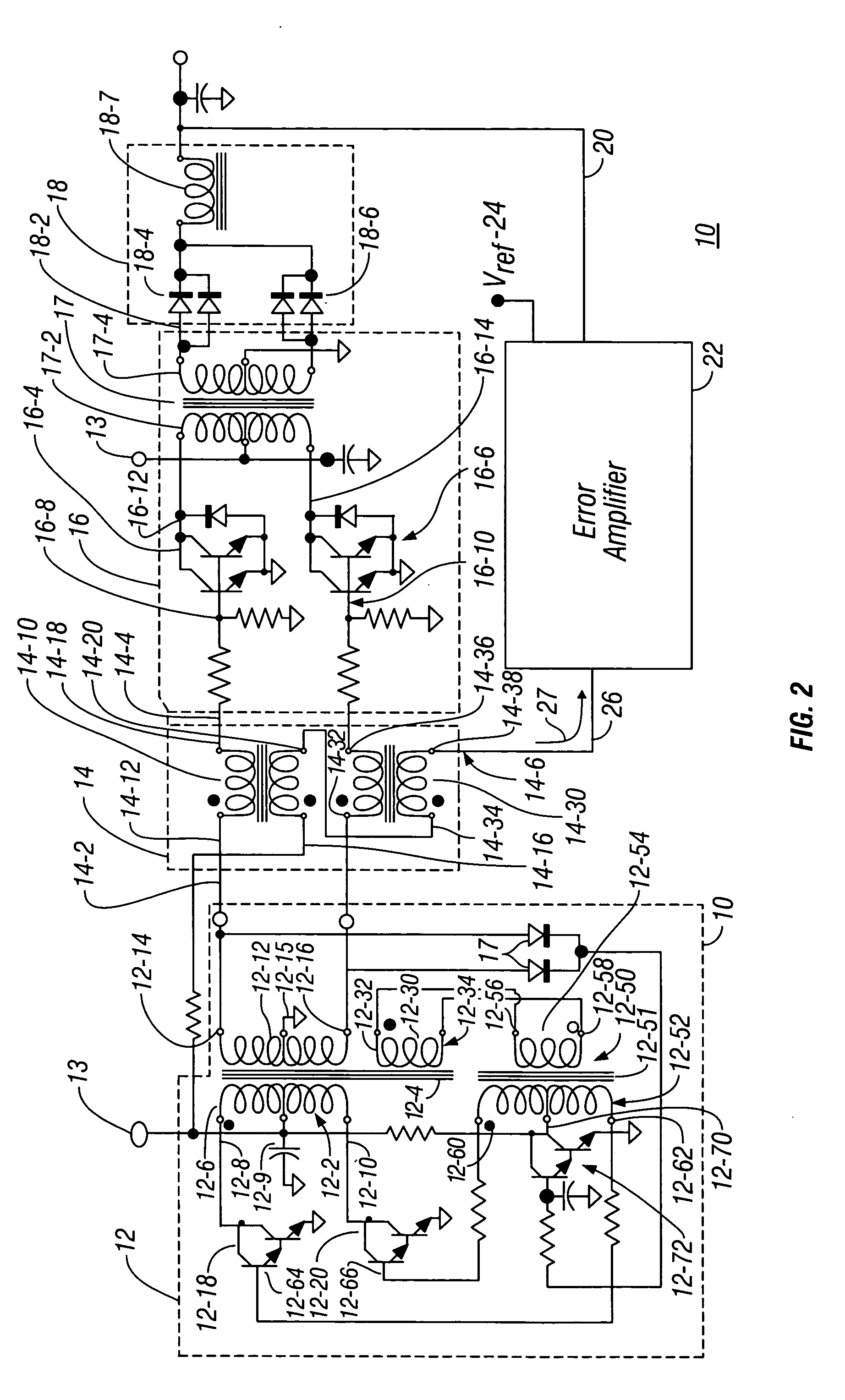High temperature power supply
- Summary
- Abstract
- Description
- Claims
- Application Information
AI Technical Summary
Benefits of technology
Problems solved by technology
Method used
Image
Examples
Embodiment Construction
[0011]FIG. 1 is a block diagram of functional elements of the high temperature power supply 10. The square wave generator 12, which is implemented by a Royer circuit and described more fully below, generates a square wave output pulse stream depicted by the waveform 13 shown in FIG. 1. The pulse width modulator 14 allows only a portion of each pulse from the Royer circuit to turn on a current driver 16-1, the output of which drives current through the primary winding of an output transformer 16-2. The output winding of the transformer 16-2 is rectified and filtered 18 to produce a D.C. output voltage 20.
[0012] The output of the pulse with modulator 14 is a stream of pulses, 15 that are output from the Royer circuit 12. Inasmuch as the pulses output from the pulse width modulator 14 will vary according to the load on the power supply and its desired output voltage, the pulse width modulator 14 output signal can be considered a “variable pulse width output” signal. The time duration ...
PUM
 Login to View More
Login to View More Abstract
Description
Claims
Application Information
 Login to View More
Login to View More - R&D
- Intellectual Property
- Life Sciences
- Materials
- Tech Scout
- Unparalleled Data Quality
- Higher Quality Content
- 60% Fewer Hallucinations
Browse by: Latest US Patents, China's latest patents, Technical Efficacy Thesaurus, Application Domain, Technology Topic, Popular Technical Reports.
© 2025 PatSnap. All rights reserved.Legal|Privacy policy|Modern Slavery Act Transparency Statement|Sitemap|About US| Contact US: help@patsnap.com



